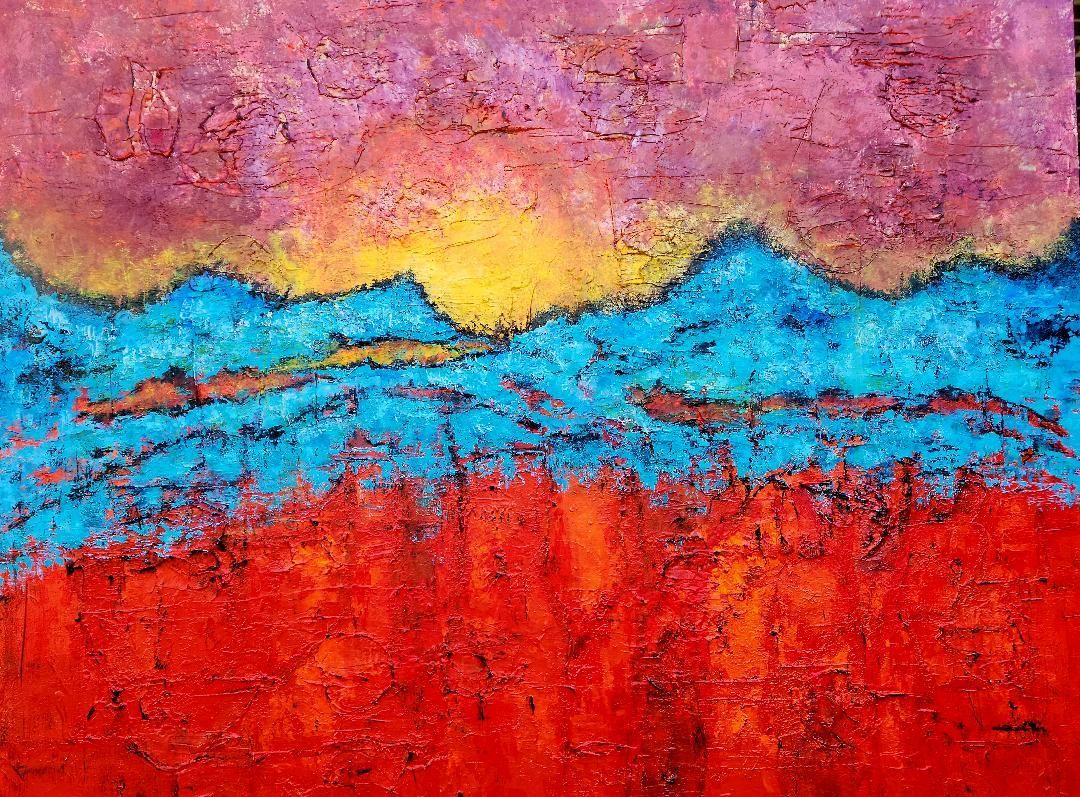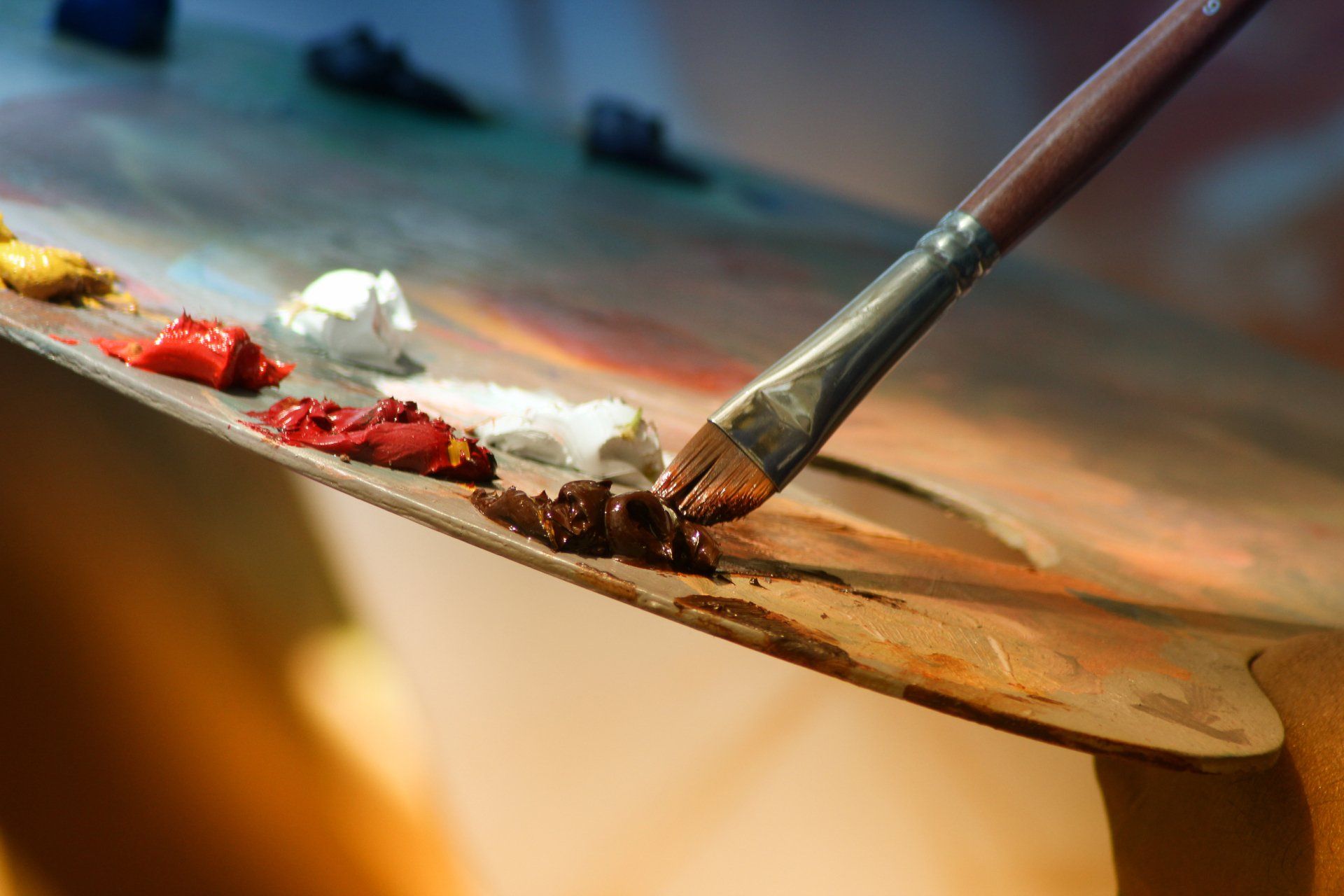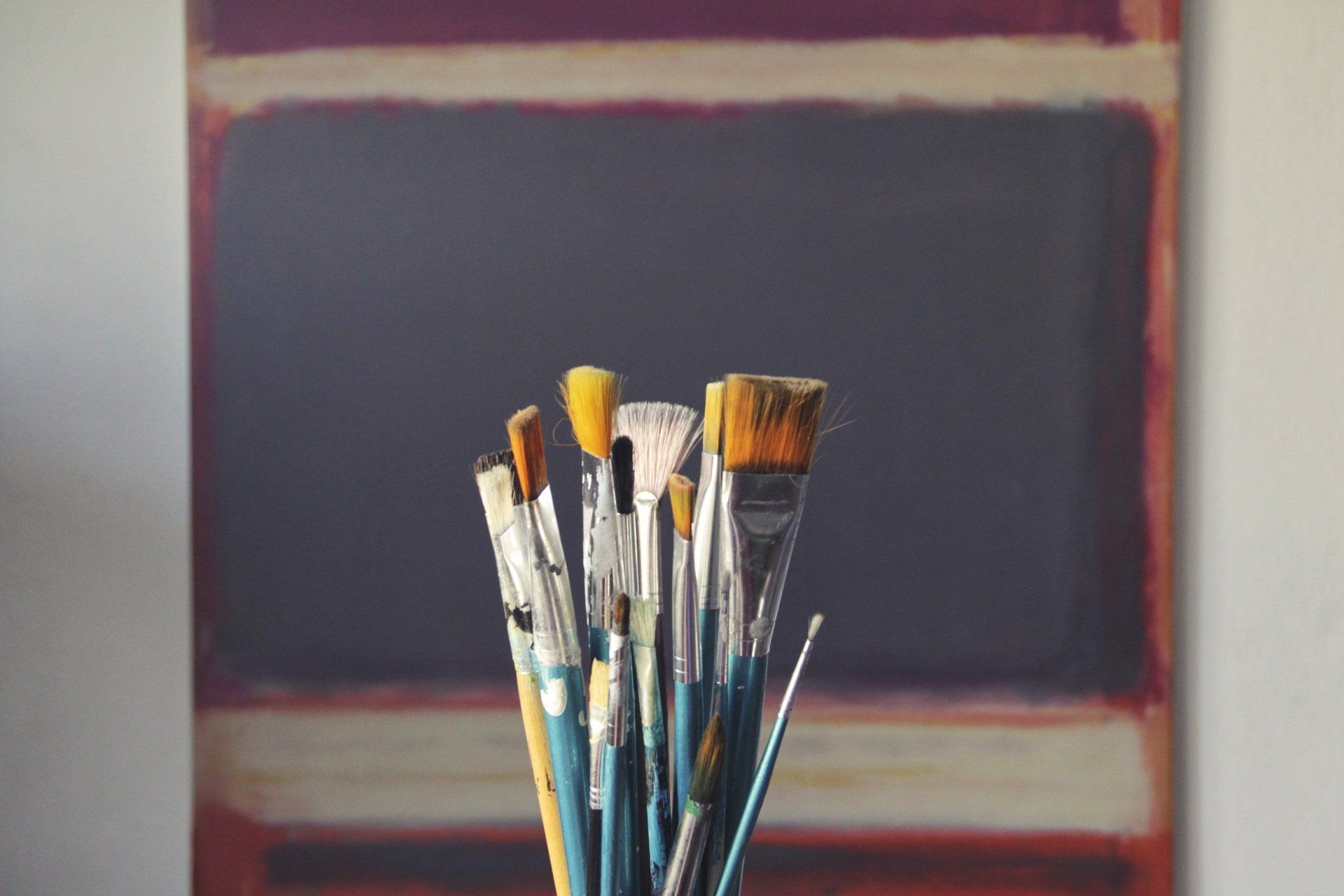Call Liz: 817-716-2114
The Enchanting World of Textured Art: A Symphony of Sensations

The Enchanting World of Textured Art: A Symphony of Sensations
In the realm of art, where visual language meets tactile sensation, texture emerges as a captivating force. It transforms the flatness of a canvas into a realm of sensory delight, inviting viewers to not only see but to touch and feel the very essence of a creation. Texture, in art, is more than a surface quality—it is a dynamic element that profoundly influences the emotional resonance of a piece. In this exploration, we unravel the beauty of textured art, delving into its significance, the myriad forms it takes, and the profound impact it imparts on both the artist and the observer.
Texture Unveiled: A Multifaceted Dimension of Art
Texture in art is the tactile quality of the surface—how it looks and how it feels under the fingers. It is a nuanced aspect that adds layers of complexity to a two-dimensional canvas, transforming it into a multidimensional experience. Understanding and harnessing texture is crucial for artists seeking to imbue their creations with depth and emotional resonance.
1. Impact on Feeling and Perception:
Texture, as an element of art, goes beyond mere aesthetics. It is a dynamic force that directly influences the emotional response and perception of an artwork. The tactile quality of a surface can evoke feelings of warmth, roughness, smoothness, or even a sense of mystery, creating a dialogue between the viewer's senses and the art.
2. The Power of Touch:
While visual appreciation is inherent to art, texture invites the additional sense of touch into the equation. The physical interaction between the fingertips and the textured surface enhances the viewer's engagement, fostering a more intimate and immersive experience. The artwork ceases to be a distant visual entity; it becomes something to be felt, explored, and experienced.
3. Dynamic Interaction with Light:
Texture plays a pivotal role in the way light interacts with a surface. The interplay of light and shadow on textured art creates dynamic visual effects, adding a layer of complexity and intrigue. Whether through the pronounced relief of a sculpture or the subtle brushstrokes on a canvas, texture becomes a conductor of light, shaping the visual narrative.
The Importance of Texture: A Personal Perspective
The significance of texture in art is perhaps best articulated by artists themselves, who intimately understand its transformative power. The surface quality of a canvas, the choice of materials, and the application of various techniques become integral components in the artist's palette.
1. Divergent Feelings from Different Surfaces:
As an artist, the choice of texture is akin to selecting the emotional language of a piece. The difference in the surface quality of a canvas can evoke varied feelings in both the creator and the observer. A smooth surface may exude tranquility, while a rough, impasto texture might convey intensity and raw emotion.
2. A Canvas that Comes Alive:
The magic of texture lies in its ability to bring a painting to life. Rather than a static, flat surface, texture allows a painting to leap off the canvas, engaging the viewer in a dance of colors, shapes, and undulating surfaces. It transforms the artwork into a living, breathing entity that evolves with the observer's perception.
3. Building Layers and Dimension:
Texture becomes a vehicle for the artist to build layers and dimension within a piece. It allows for the application of multiple color layers, creating a three-dimensional spectacle that captivates the observer. The tactile nature of textured art contributes to the storytelling aspect of the piece, guiding the viewer through the artist's narrative.
The Multifarious Forms of Textured Art
Textured art is a vast and diverse realm that transcends traditional boundaries. It manifests in various forms, each expressing a unique dialogue between the artist, the materials, and the viewer.
1. Impasto Technique:
The impasto technique involves the thick application of paint, creating visible brushstrokes and a textured surface. This method, championed by artists like Vincent van Gogh, adds a visceral quality to the artwork, allowing the observer to feel the intensity of the artist's strokes.
2. Collage and Mixed Media:
Collage and mixed media art introduce texture through the layering of diverse materials. The juxtaposition of paper, fabric, or found objects creates a tactile mosaic that stimulates both sight and touch. This form of textured art often invites viewers to explore the piece through both senses.
3. Sculptural Textures:
Sculptors employ a myriad of techniques to impart texture to their creations. Whether through carving, molding, or the strategic placement of materials, sculptures become tactile entities that invite interaction. The texture of a sculpture becomes an integral part of its narrative, guiding the viewer's hands along its contours.
4. Textured Surfaces in Photography:
Texture extends its influence beyond traditional art forms, making its mark in the realm of photography. Photographers manipulate light and shadow to emphasize texture, creating images that evoke the same tactile sensations as traditional artworks. Macro photography, in particular, delves into the intricate textures of everyday objects, revealing a hidden world.
The Dance of Light and Texture: A Visual Symphony
One of the enchanting qualities of textured art lies in its dance with light. The interplay between light and texture creates a visual symphony that elevates the artwork to new heights.
1. Shadows and Highlights:
The textured surface of an artwork becomes a canvas for the play of shadows and highlights. The raised elements catch light, casting shadows that add depth and dimension. This dynamic interaction with light is a choreography that evolves throughout the day, inviting viewers to witness the artwork in different moods.
2. Enhancing Visual Interest:
Texture becomes a tool for enhancing visual interest in a piece. It draws the eye, guiding the viewer through a visual journey. Whether through intricate patterns, raised surfaces, or subtle variations, textured art demands attention and invites exploration.
3. Tactile Illusions:
Some textured art plays with tactile illusions, deceiving the senses in a delightful dance of perception. What appears to be a rough, textured surface might reveal itself to be smooth upon touch, or vice versa. These illusions add an element of surprise and intrigue to the viewing experience.
Masterpieces in Texture Examples
Examining specific works of art that masterfully utilize texture offers insight into the profound impact of tactile elements on the observer.
Starry Night" by Vincent van Gogh:
Van Gogh's "Starry Night" exemplifies the power of the impasto technique. The thick, swirling brushstrokes not only convey the tumultuous night sky but also create a textured surface that beckons the viewer to feel the intensity of the artist's emotions.
"Woman I" by Willem de Kooning:
Willem de Kooning's "Woman I" is a testament to the textured complexity of mixed media art. The layering of materials, including newspaper fragments and paint, results in a textured mosaic that adds both visual and tactile depth to the piece.
"The Kiss" by Auguste Rodin:**
Auguste Rodin's sculpture "The Kiss" showcases the sculptural aspect of texture. The delicate, tactile details in the lovers' embrace emphasize the sensuality of the moment, creating an emotional resonance that extends beyond the visual.
The Contemporary Resurgence of Textured Art
As we traverse the landscape of contemporary art, it becomes evident that the allure of textured art continues to captivate both creators and enthusiasts. Artists today draw inspiration from traditional techniques while pushing the boundaries of what texture can mean in a modern context.
1. Digital Innovations:
The digital age has ushered in new possibilities for textured art. Artists leverage technology to create digital textures that emulate the tactile qualities of traditional mediums. This synthesis of the digital and the tactile adds a layer of complexity to contemporary art.
2. Environmental Consciousness:
Contemporary artists often weave textures with an environmental consciousness. The use of sustainable materials, found objects, and recycled elements not only contributes to the tactile richness of the artwork but also aligns with a global awareness of sustainable practices.
3. Interactive Art Installations:
The resurgence of interest in immersive and interactive art experiences has given rise to textured art installations. Viewers are not mere observers but active participants, invited to touch, feel, and interact with the artwork. These installations blur the boundaries between the observer and the observed.
Texture in the Everyday: Art Beyond the Canvas
The beauty of textured art extends beyond traditional forms and permeates the fabric of our daily lives. From interior design to fashion, textured elements add a sensory layer to the mundane, transforming the ordinary into the extraordinary.
1. Textured Interiors:
Interior designers recognize the power of texture to transform living spaces. From textured walls and fabrics to tactile furniture elements, the interplay of textures creates environments that engage multiple senses, fostering a harmonious and inviting atmosphere.
2. Fashion as a Textured Canvas:
Fashion designers weave texture into the very fabric of their creations. The choice of materials, embellishments, and innovative techniques creates garments that not only appeal to the eye but also invite touch. Texture in fashion becomes a form of personal expression, allowing individuals to interact with their clothing on a sensory level.
The Therapeutic Essence of Textured Art
The enchantment of textured art extends beyond the aesthetic and sensory realms; it has therapeutic dimensions that resonate with both creators and appreciators.
1. Tactile Therapy:
Engaging with textured art provides a form of tactile therapy. The act of touching a textured surface, whether it's a painting, sculpture, or textile, can be grounding and calming. This sensory experience becomes a means of connecting with the present moment and fostering mindfulness.
2. Expressive Potential:
For artists, texture becomes a tool for expressive potential. The act of manipulating materials, building layers, and experimenting with textures is not only a creative endeavor but a form of emotional expression. The textured surface becomes a canvas for the artist's inner world to unfold.
Conclusion: A Tapestry of Sensations
In the grand tapestry of art, texture emerges as a thread that weaves together visual and tactile sensations. It transforms the canvas into a living entity, inviting viewers to explore with both sight and touch. The beauty of textured art lies not only in its aesthetic appeal but in its capacity to evoke emotions, tell stories, and transcend the boundaries of traditional artistic forms.
As we continue to navigate the vast landscape of artistic expression, let us revel in the enchanting world of textured art—a symphony of sensations that captivates the eye, engages the hands, and resonates with the very essence of our humanity. Whether on canvas, in sculpture, or woven into the fabric of our daily lives, textured art stands as a testament to the beauty that arises when creativity and tactility converge in a harmonious dance.

All Rights Reserved | Liz Johnston Art


